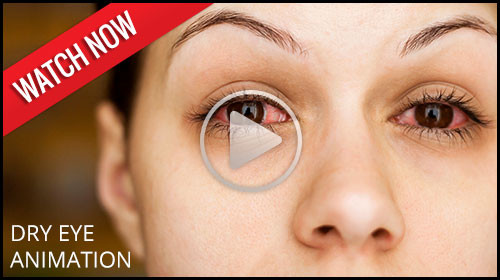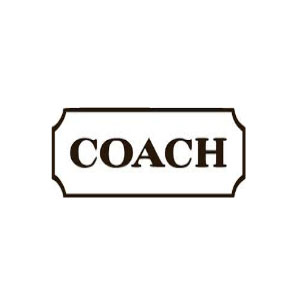| Blepharitis | Cataracts |
| Conjunctivitis | Diabetic Retinopathy |
| Dry Eye Syndrome | Glaucoma |
| Macular Degeneration | Retinal Detachment |
Blepharitis
 There are two types of blepharitis. Seborrheic blepharitis is often part of an overall skin condition called seborrhea, which may also affect the scalp, chest, back and the area behind the ears.
There are two types of blepharitis. Seborrheic blepharitis is often part of an overall skin condition called seborrhea, which may also affect the scalp, chest, back and the area behind the ears.
The second form of blepharitis - staph blepharitis - is a more common condition, caused by bacteria, that begins in childhood and may continue through adulthood.
Causes
Hormones, nutrition, general physical condition, and even stress may contribute to seborrheic blepharitis. Build-ups of naturally occurring bacteria contribute to staph blepharitis.
Symptoms
Blepharitis could be described as dandruff of the eyelids. Seborrheic blepharitis causes redness of the eyelids, flaking and scaling of the eyelashes, and greasy, waxy scales. Staph blepharitis also causes redness of the eyelid margins and flaking of the lashes, and can cause loss of eyelashes, eyelid scarring, and red eye.
Treatment
Eyelid scrubs with baby shampoo or a specially formulated cleaner can reduce the symptoms of blepharitis. Application of hot packs to the eyes daily can also help. Staph blepharitis may also require antibiotic drops or ointments. The use of artificial tears is often helpful to relieve associated discomfort or dryness.
Cataracts
 A cataract is a cloudiness that occurs in the lens inside of the eye.
A cataract is a cloudiness that occurs in the lens inside of the eye.
The lens is made mostly of water and protein arranged to let light through. When the protein clumps, light is blocked and the lens appears cloudy. Cataracts are not a disease; we will all develop cataracts as we get older.
Symptoms
A person with cataracts may notice faded colors, problems with light (such as halos, or headlights that seem too bright), or poor night vision.
Treatment
Your eye doctor can detect the presence of cataracts during a thorough eye exam, including a microscopic examination of the inside of the eye. When vision is impaired to a point where it interferes with daily activities, surgery may be indicated. Surgery is done on an out-patient basis and involves a very small incision, through which the cloudy substance of the lens is removed and replaced with an intra-ocular lens implant (IOL). With today's technology and surgical techniques most patients find their vision after surgery to be very clear at distance, without the use of glasses.
Conjunctivitis (pink eye)
 Conjunctivitis, is a redness of the eye. It is often accompanied by a discharge and itching or a foreign body sensation.
Conjunctivitis, is a redness of the eye. It is often accompanied by a discharge and itching or a foreign body sensation.
Causes
Pink eye is most often a viral infection, but may also be caused by bacteria or an allergic reaction. Viral and bacterial pink eye can be highly contagious.
Prevention & Treatment
To avoid spreading conjunctivitis, wash your hands often, don't touch the infected area with your hands, don't share wash cloths or towels, and avoid using makeup which may become contaminated. A child with pink eye should be kept from school for a few days. Sometimes your doctor will need to prescribe antibiotic eye drops or ointments to treat conjunctivitis.
Diabetic Retinopathy
 Diabetic retinopathy is a condition associated with diabetes. High levels of blood sugar can damage tiny blood vessels in the eye, causing poor circulation. This can cause small leaks in the vessels, and swelling of the retinal nerve layer. Eventually new vessels, which are very fragile, may form to replace the damaged vessels. The new vessels can burst, creating a hemorrhage, and resulting in blurred vision or even blindness.
Diabetic retinopathy is a condition associated with diabetes. High levels of blood sugar can damage tiny blood vessels in the eye, causing poor circulation. This can cause small leaks in the vessels, and swelling of the retinal nerve layer. Eventually new vessels, which are very fragile, may form to replace the damaged vessels. The new vessels can burst, creating a hemorrhage, and resulting in blurred vision or even blindness.
Symptoms
Symptoms of diabetic retinopathy include:
- Blurred or darkened vision
- Sudden loss of vision
Risk Factors & Treatment
It is critical for all diabetic patients to have a thorough eye health examination at least every year. When diabetic retinopathy is diagnosed early, medical management, including laser treatment and other surgeries, can be more effective in preserving vision. In addition to diabetic retinopathy, diabetic patients also have a higher risk of developing cataracts at a younger age, and of having glaucoma. If you have diabetes, make sure you control your blood sugar level. This will reduce your risk of getting diabetic eye disease and other complications involving the heart, kidneys, and other organs.
Dry Eye Syndrome
 If your eyes are constantly itchy or dry, you may have dry eye syndrome, which affects almost 10 million Americans. Dry eye syndrome is caused by a lack of, or poor quality of, tears. Tears lubricate the outer layer of the eye called the cornea. If the tears are not composed of a proper balance of mucous, water, and oil, the eye becomes irritated.
If your eyes are constantly itchy or dry, you may have dry eye syndrome, which affects almost 10 million Americans. Dry eye syndrome is caused by a lack of, or poor quality of, tears. Tears lubricate the outer layer of the eye called the cornea. If the tears are not composed of a proper balance of mucous, water, and oil, the eye becomes irritated.
Symptoms
Dry eye syndrome leads to a number of symptoms, including itching, irritation, burning, excessive tearing, redness, blurred vision that improves with blinking, and discomfort after long periods of watching television, driving, using a computer, or reading.
Risk Factors
There are many environmental factors that can contribute to dry eye syndrome. These include dry, hot, or windy climates, high altitudes, air-conditioned rooms, and cigarette smoke. Contact lens wearers, people with drier skin, and the elderly are more likely to develop dry eye syndrome. You may also be more at risk if you take certain medications, have a thyroid condition, a vitamin-A deficiency, Parkinson's or Sjorgen's disease, or if you are a woman going through menopause.
Glaucoma
 Glaucoma is generally caused by too much fluid pressure inside the eye. Fluid in the eye helps to nourish and cleanse the inside of the eye by constantly flowing in and out.
Glaucoma is generally caused by too much fluid pressure inside the eye. Fluid in the eye helps to nourish and cleanse the inside of the eye by constantly flowing in and out.
When too much fluid is produced or the fluid is prevented from flowing out, the intraocular pressure increases and damages the optic nerve. This causes a gradual loss in peripheral vision.
Symptoms
Open angle glaucoma is often called the "Sneak Thief of Sight" because it has no symptoms until the disease is in advanced stages. With advanced glaucoma patients develop tunnel vision, where their peripheral field of vision decreases. Glaucoma can eventually cause blindness.
Risk Factors & Treatment
Heredity seems to be a risk factor. Also, you may be at greater risk if you are over 45, of African descent, near-sighted, diabetic, or smoke. Finally, if you have used steroids or cortizone for a long period of time, or if you have suffered an eye injury in the past, you may have a greater chance of developing glaucoma.
Macular Degeneration
 Macular degeneration is a disease which affects a small area of the retina known as the macula. The macula is the central area of the retina that allows us to see the fine detail of whatever we look at directly. Macular degeneration occurs when the macula is damaged.
Macular degeneration is a disease which affects a small area of the retina known as the macula. The macula is the central area of the retina that allows us to see the fine detail of whatever we look at directly. Macular degeneration occurs when the macula is damaged.
"Wet" vs. "Dry"
Most often, macular degeneration is accompanied by the formation of yellow deposits called "drusen" under the macula, which dry out or thin the macula. This is called "dry" macular degeneration. In less common cases, abnormal blood vessels develop under the macula and leak fluid. This is called "wet" macular degeneration.
Causes
A number of uncontrollable factors contribute to macular degeneration, including age, sex, eye color, farsightedness, and race. Risk factors you can control include smoking, high blood pressure, exposure to harmful sunlight, and diet. Every year millions of dollars of research are spent on studying how to best treat and/or prevent macular degeneration. This research is undated almost continuously. Our eye doctor is committed to staying current with these studies so that we may best serve you with the latest information and treatments.
Symptoms
It is difficult for patients to detect dry macular degeneration in its early stages. The most common symptom is blurred vision. Wet macular degeneration progresses much faster when it occurs. Symptoms include blurred vision and distortion or a dark spot in central vision. Both forms of macular degeneration can cause severe visual impairment.
Treatment
Currently, there is no cure for macular degeneration, but treatment is available to slow the effects and progression of the disease.
Retinal Detachment
 The part of the eye which collects light and transmits the images to the optic nerve and brain is the retina. It lines the inner back wall of the eye. When separated from the back wall, it is known as retinal detachment.
The part of the eye which collects light and transmits the images to the optic nerve and brain is the retina. It lines the inner back wall of the eye. When separated from the back wall, it is known as retinal detachment.
Symptoms
A retinal detachment may cause a sudden defect in your vision. It may just cause a blind spot too small to notice, or it may cause a noticeable shadow which obscures your vision. A sudden increase in "floaters," which look like small particles or fine threads, may also be noticed. Finally, flashes of light may be associated with retinal detachment.
Risk Factors
Most retinal detachments are not caused by any specific injury or event, but eye injuries, tumors, and cataract surgery can cause the retina to detach. Very near-sighted individuals and the elderly are at greater risk for spontaneous detachment. Also, diabetic retinopathy, a condition associated with diabetes, can cause bleeding which can lead to retinal detachment.














